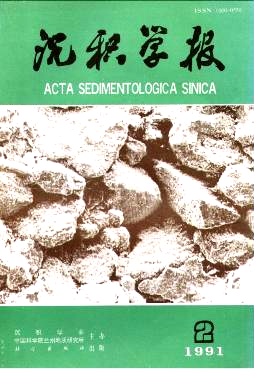The Sedimentary Environment of Cambrian- Ordovician in the Aksu and Keping Areas of Tarim Basin
- Received Date: 1990-05-30
- Publish Date: 1991-06-10
Abstract: Aksu and Keping in northwest Tarim Basin are the areas with perfect outcrops of Lower Palaeozoic strata. This paper mainly deals with Cambrian and Ordovician carbonate strata on the western side of Aksu-Karshgar high way for the study of sedimentary environments and development of the strata. The Cambrian and Ordovician strata are a series of dark-carbonate formations, with total thickness of about 1341m The Cambrian system consists mainly of dark dolostones accompanied with intraclast limestone, sandstone and mudstone, the thickness is 541m. The Lower Ordovician series was deposited continuously after the Cambrian system, and the Upper Ordovician series was lacuna. The lower part of Lower Ordovician series are massive dolostone, upwards there are successively limestone, biotic limestone and intraclast limestone. The Middle Ordovician series is interbedded limestone, siltstone and mudstone, and the total thickness is 800m.The strata can be divided into 8 groups and two types of sedimentary models according to their carbonate minerals, crystal grainsi, texture, organisms and inraclasts. The sedimentary environment was developed from subtidal zone to supratidal zone of carbonate plateform of semienclosed bay and then into open shallow marine continental shelf.The Cambrian system was a tidal environment that undergone two cycles of regressions. The Ordovician system was once a larger transgression. During the Cambrian, the sea water body was shallow, the temprature was higher and the environment was calm, a large quantity of carbonate deposited in the semienclosed restricted bay.The salinity of sea water at that time was favourable for the development of hypersaline stromatolithic algae, which were flat-top, continuously-upwarping algal mat mainly developed in the supratidal zone.Stromatolite with fracture was developed mostly in the Upper-Middle Cambrian, moreover, edgewise and gravel clastic dolostones were also deposited in the same period.However, with continuous development of stromatolite, main deposits were massive silica-contained dolostone in the early Ordovician.From the upper part of Lower Ordovician the environment had changed greatly, at first deposits are algal limestone that consists of algal grains, granules, thrombolites which formed in turbulent water; continuously upwards are the deposits of orthoceras limestone which formed from high-energy subtidal to shallow-water environments; the top of this series are very thick black shales with pyrite nodules. The Upper Ordovician series is interbedded bioclastic intraclast limestone, siltstone and mudstone with typical thin laminated nodule limestone and huge wave ripples of flowing water, representing a transition from turbulent, open shallow sea to continental shelf. Up to then all strata had risen and the sedimention of platform in this area had ceased. The datas of elements, stable isotopes, compositions of clay minerals were also employed for discussing the conditions of sedimentary medium in this paper.
| Citation: | Zhu Lianfang, Ma Baolin. The Sedimentary Environment of Cambrian- Ordovician in the Aksu and Keping Areas of Tarim Basin[J]. Acta Sedimentologica Sinica, 1991, 9(2): 55-62. |






 DownLoad:
DownLoad: